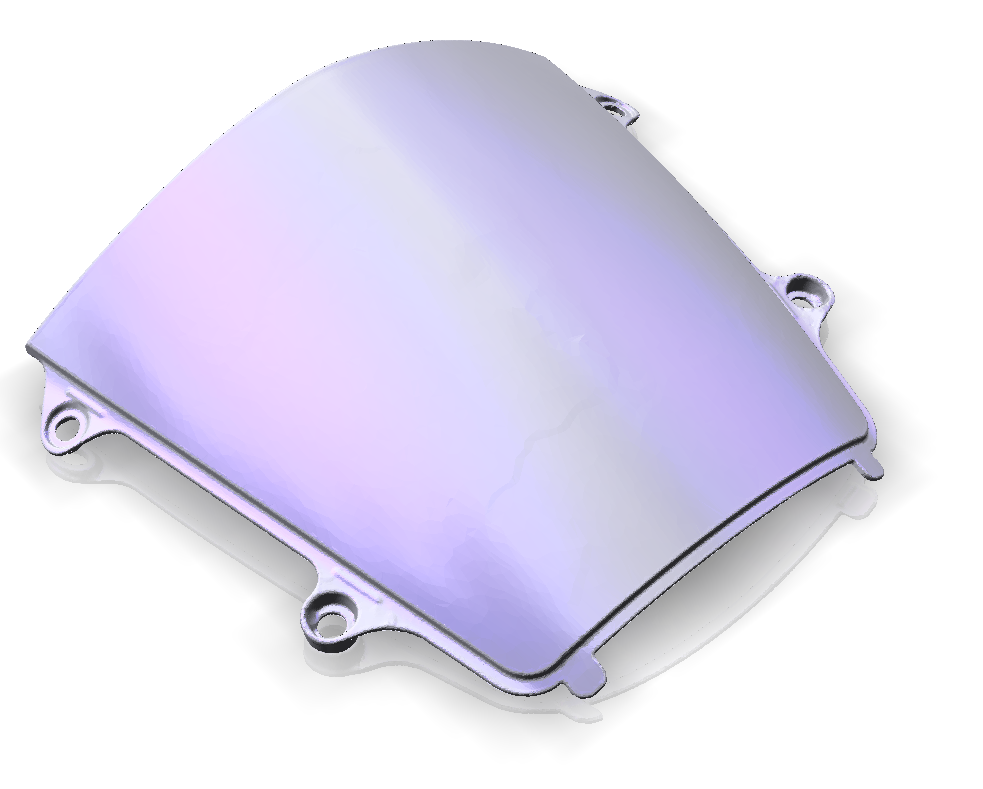Focus On: Using Meshes in Design and Prototyping processes

In this study in depth, our Product Marketing will talk about Meshes and Reverse Engineering, telling about the experience of Acripoli Srl, a factory producing components in thermoformed plastic, laser polished, hot or cold bent or silk-screened for a number of different trades.
The digital model in the Mesh format has entered with full rights the product development cycle and is more and more used in a large set of activities interacting with the processes of design, quality check and production.
In the next articles of this magazine, we shall illustrate the experience of Acripoli Srl from Rioveggio (BO, Italy), company developing molds and producing components in thermoformed plastic, laser polished, hot or cold bent or silk-screened for a number of different trades, such as automotive, motorcycle, furnishing and medical.
The model shown below is a courtesy of Acripoli. It will be examined in this article: it consists of the scan of a racing motorcycle windshield.

Meshes are returned by 3D scanning systems, providing the exact 3D digital photograph of a real model. The reduced scan time and cost, together with the accuracy of new technologies, have for sure influenced the diffusion of digital models and the possibility of actual usage of Meshes in the design processes.
The survey of a model can be can be carried out on a prototype, on a maquette or directly on the finished real part.
The scanned model can show some inaccuracies due to the scan itself or to defects really present on the actual scanned part. In some situations, moreover, the latter can have undergone some variations, be non-symmetric, etc.

Furthermore, you need to take into account that a model in the Mesh format, as much as it can be accurate, actually represents a discretization, being described as the approximation in terms of planar triangles of surfaces that are typically curved.

Through a Reverse engineering process, it is possible to reconstruct surfaces and curves of a scanned model in order to get, further on, a precise mathematical model, no longer approximate, and represented through NURBS.
The advantage consist of being able to start from an accurate mathematical model on which to be able to carry out all the designing activities that are needed, such as producing all the mold equipment, and in the possibility to make changes, modify and apply variations to a model that at such an extent can be actually and definitely managed through the CAD system.
In ThinkDesign Professional, thanks to the multi-geometry environment, the user can import and manage models of the Mesh type together with the advanced modeling environment that is available.
To dispose of Meshes in the model environment so as to reconstruct the respective model in terms of NURBS surfaces is for sure much handier and has a lot of advantages with respect to the manual measure gathering. From a a Mesh you can extract section curves, detect point and evaluate sizes and bounding boxes directly from the modeling environment.

ThinkDesign Professional users have an extremely large set of tools enabling them to work on Meshes with functionality of analysis and check, of modification and creation. Moreover, they can carry out a reconstruction of surfaces and curves in order to obtain, through a semi-automatic process, high quality surfaces.
In the next article we shall deal in depth some aspects of surface reconstruction starting from a Mesh model.
